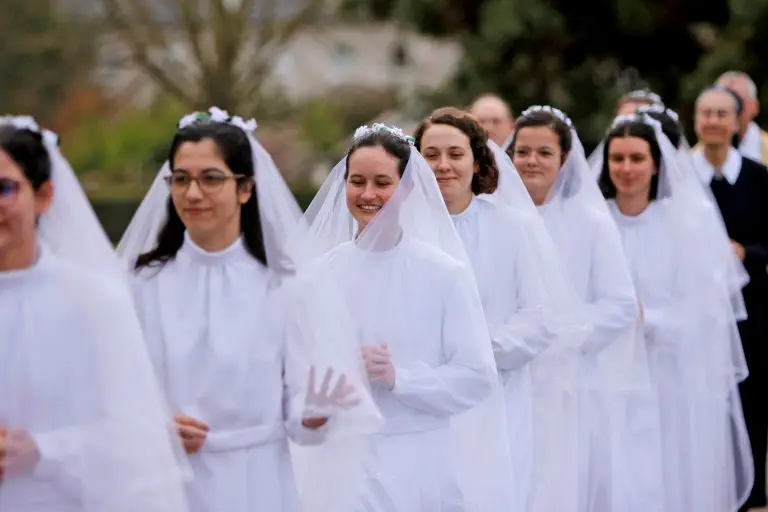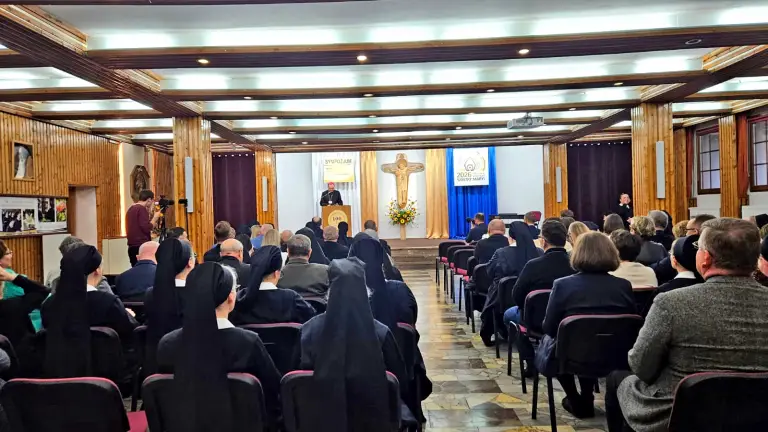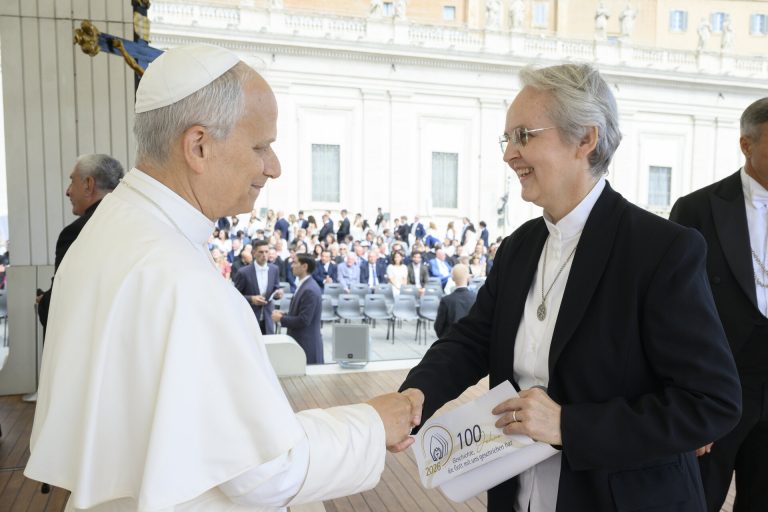Schw. M. Anrika Dold berichtet, was sie bei ihrem Einsatz erlebt hat.
Als wir gegen 13.30 Uhr in der Gegend der Flutkatastrophe ankommen, fährt uns sofort ein Junge mit seinem Fahrrad voran und zeigt uns den Weg. Ein Mann lotst uns beim Rückwärtsfahren und bietet uns anschließend seinen privaten Parkplatz an. Er hat hier eine Bäckerei.
Wir haben Besen und Schrubber dabei – auch Eimer. Die Schwestern gestern haben gemerkt, dass hier Bedarf ist. Und richtig – die Eimer sind innerhalb einer Stunde weg, von den Besen ist abends auch nichts mehr übrig, nur Schrubber gibt es dann noch einige.
Als wir mit unserer Ladung beim Zelt ankommen, werden wir erst einmal von R., dem Koordinator vor Ort, eingeführt. Schon während der Einführung kommen laufend Sachspenden an: große und kleine Lieferungen, Pakete mit Lebensmitteln, Wasser, Obst, Schuhe, Kleidung, Konserven, Handtücher, Geschirr, Einweghandschuhe … auch die Telekom kommt vorbei und verteilt kostenlos einige Handys und Powerbanks.
Was wir an Spenden annehmen können und was nicht – dafür ist R. zuständig. Und das ist sehr gut. R. hatte einen Blumenladen, aber jetzt sei alles weg, und besser als daheim herumzusitzen sei es, hier mit anzupacken. Und das tut er – von morgens früh, bis abends spät, ohne sich richtige Pausen zu gönnen.
DIE PILGERNDE GOTTESMUTTER IST AUCH DABEI
– so wie damals, bei der Hochzeit zu Kana: „… und die Mutter Jesu war dabei.“ Ich stelle sie ohne viele Worte einfach hinten in die Ecke im Zelt, wo wir unsere privaten Sachen ablegen können. Später verteilt eine Frau Rosen und schenkt uns eine. Die ist für dich, denke ich, und lege sie zum Marienbild: Eine Rose für Maria!
Es herrschen insgesamt eine große Offenheit und Dankbarkeit uns gegenüber. Mit so vielen Menschen, gerade auch Betroffenen, kommen wir ins Gespräch.
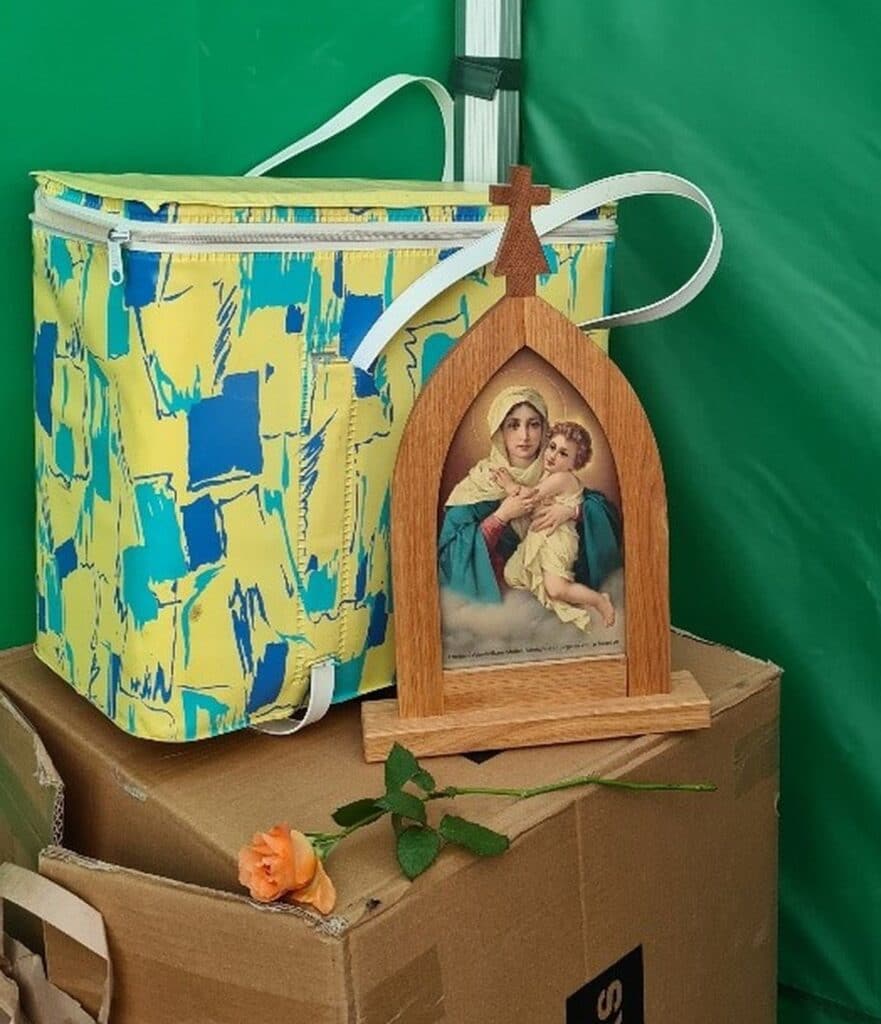
♥ Ein jüngerer Mann z.B., der mit seiner hochschwangeren Frau und deren Mutter ins Zelt kommt, erzählt, dass er gerade noch fünf Minuten, ehe es losging, nach Hause kam. So konnte er mitsorgen, dass seine Frau und er sich rechtzeitig in den oberen Stock des Hauses retten konnten – sie hätten gar nicht mehr aus dem Haus gekonnt, so schnell kam das Wasser hereingeschossen und versperrte jeden Weg. Jetzt seien sie bei den Schwiegereltern untergebracht. Mir kommt sofort das Bild von der Herbergssuche und wir reden kurz darüber. Wie gut, dass sie jetzt erstmal eine Bleibe haben.
Die Gottesmutter versteht jedes Leid
♥ Ein älteres Ehepaar ruht sich vor dem Zelt etwas aus. Es gibt ein paar Stühle, und der Mann setzt sich dort in den Schatten. Er hätte in seinem Leben schon ganz viel Schweres erlebt, meint er. Und als er erzählt, wie er mit sieben Jahren beide Eltern verloren hat, kommen ihm die Tränen. Die Frau will wissen, zu welcher Gemeinschaft wir gehören, Schönstätter Marienschwestern kennen sie nicht. Ich zeige ihnen unser MTA-Bild auf einer kleinen Karte und sage „Das ist unser Gnadenbild.“ Und dass die Gottesmutter jedes Leid verstehe. Sie könnten das Kärtchen behalten. Der Mann steckt es ganz ehrfürchtig ein und sagt: „Bei uns im Keller hängt jetzt das Kreuz noch – alles andere hat es weggeschwemmt. Und das behalte ich. Wissen Sie, ein Kreuz könnte ich nie wegtun. Auch wenn ich nicht so ein Kirchgänger bin. Mein Pastor hat mir beigebracht, dass es einen Unterschied gibt: Es gibt Gott und Jesus – und dann gibt es noch die Kirche.“ „Und dieser Gott ist jetzt auch bei uns – durch alle Menschen, die helfen“, konnte ich ihm sagen. „Er lässt uns nicht allein!“
Immer wieder kommen ihm die Tränen
♥ Ein anderer Herr, der ins Zelt kommt, bringt kaum ein Wort heraus. Stockend erzählt er, wie er jetzt nach dieser Flut untergebracht sei: Seine Tochter mit Familie habe ihn aufgenommen. Die würden sich alle rührend um ihn kümmern. Und dann erzählt auch er, was er in seinem Leben schon alles bewältigt hat: Seine Frau war krank, er hat sich 40 Jahre lang um sie gekümmert, obwohl viele zu ihm sagten, er solle sich von ihr trennen. Vor fünf Jahren sei sie gestorben. Immer wieder kommen ihm die Tränen. Auch er bekommt eine kleine MTA-Karte und nimmt sie gerne entgegen.
♥ Eine Frau, die vorbeikommt, erzählt, dass sie erst heute erfahren hat, dass ihre beiden erwachsenen Kinder noch leben. Sie hatten bisher keinen Kontakt mehr – und sie wischt sich ihre Tränen ab. Die MTA-Karte steckt sie andächtig ein und bedankt sich sehr.
Die Zeit vergeht wie im Flug. Abends bin ich wirklich müde. Wir machen noch eine Runde durch die Stadt und nehmen die kleinen Geschenke mit, die eine Kindergartengruppe an unserem Stand abgegeben hat: Selbstbemalte Papiertüten mit kleinen Spielsachen und Süßigkeiten für Kinder.
Wir sind noch keine 100 Meter weit, da sehen wir ein paar junge Leute und ein paar Kinder. Wir kommen ins Gespräch und verschenken an die Kinder unsere Tüten. Die beiden jungen Frauen sagen scherzhaft, es gäbe auch große Kinder. Und auch sie bekommen zwei Tüten.
Und es ist, als ob wir uns schon länger kennen würden…
♥ Dann erzählen sie, dass sie hier in der Bäckerei arbeiten. Und der junge Mann sagt, er habe diesen Laden Anfang des Jahres von seinem Vater übernommen. Und jetzt sei alles kaputt, die ganze Backstube sei hin. „Wollen Sie mal schauen? Sie können gerne hineingehen.“ Wir folgen seiner Einladung und schauen uns alles an. Es ist immer noch ein Bild der Verwüstung, obwohl sie schon alles vom gröbsten Schlamm befreit haben. Dann kommt der Seniorchef mit seiner Frau herein, und als er mich sieht, meint er: „Wir kennen uns doch!“. Es ist der freundliche Mann von heute Morgen, der uns seinen Parkplatz zur Verfügung gestellt hat. Sie alle halten jetzt fest zusammen, versuchen, den Kopf nicht hängenzulassen, einander beizustehen und es gemeinsam zu schaffen. Und es ist, als ob wir uns schon länger kennen würden.
Sie sind einfach da und machen.
Inmitten dieser Katastrophe gibt es so viel Hoffnungsvolles – und es zeigt sich, wieviel Hilfsbereitschaft im Tiefsten in uns Menschen steckt. Wie es in einer ZDF-Dokumentation über die Flutkatastrophe am Ende heißt:
„Vielleicht ist es tatsächlich so,
dass es die schlimmsten Momente sind,
die das Beste in uns zum Vorschein bringen.“
Gegen 20.00 Uhr fahren wir wieder los … die Bilder der Verwüstung und Schicksale der Menschen „fahren“ mit, aber auch die Erkenntnis: Es ist wichtig, dass wir da sind, dass Kirche präsent ist.
Wo sonst sollte sie jetzt sein, als ganz nah bei den Menschen.
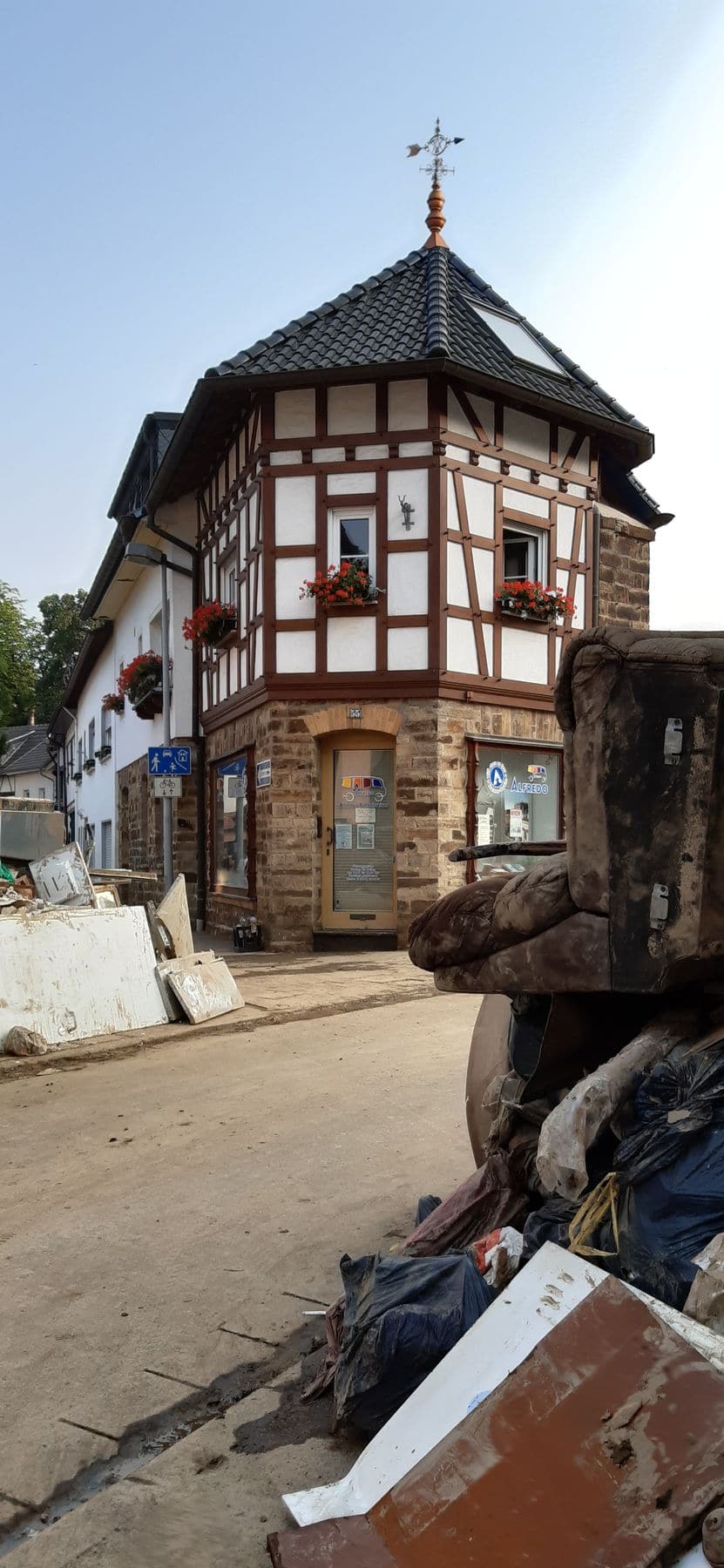
Quelle: Schönstätter Marienschwestern

